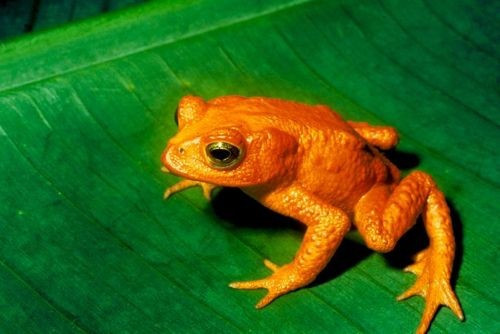‘Aquatic Fleas’ To the Rescue of World’s Amphibians

Researchers at the Oregon State University have discovered a freshwater organism that might be the key to fight a fungus, which is the principal cause for the worldwide amphibian decline.
A freshwater species of zooplankton, called Daphnia magna, could provide a desperately needed tool for biological control of the deadly fungus whose impact, one researcher has called, the most spectacular loss of vertebrate biodiversity due to disease in recorded history.
Daphnia magna is a variety of water fleas of the genus Daphnia, some species of which are commonly used as food for aquarium fish.
It was known that the zooplankton could devour some types of fungi. Oregon researchers wanted to find out whether Daphnia magna could also consume the chytrid fungus that's been devastating amphibian populations worldwide, including Colorado's endangered boreal toad. Through extensive research, scientists confirmed that Daphnia magna could consume the free swimming pores of the fungal pathogen.
Our laboratory experiments and DNA analysis confirmed that it would eat the zoospore, the free-swimming stage of the fungus, said lead researcher Julia Buck, an OSU doctoral student in zoology.
The fungus B. dendrobatidis, dubbed a chytrid fungus, is responsible for a recently discovered disease of amphibians chytridiomycosis. It can disrupt electrolyte balance and lead to death from cardiac arrest in its amphibian hosts if it reaches high levels, an OSU release said Friday. However, OSU researchers found that Daphnia magna might make a meal of the troublesome fungus.
Now, the scientists have to conduct field studies to confirm the zooplankton's efficacy in a natural setting. The OSU scientists have found that Daphnia inhabits amphibian breeding sites where chytrid transmission occurs and may be able to stem the unprecedented population declines and extinctions.
The chytrid fungus is not always deadly at low levels of infestation, Buck said. It may not be necessary to completely eliminate it, but instead just reduce its density in order to prevent mortality.
We feel that biological control offers the best chance to control this fungal disease, and now we have a good candidate for that, Buck said. Efforts to eradicate this disease have been unsuccessful, but so far no one has attempted biocontrol of the chytrid fungus. That may be the way to go.
Amphibians have survived for millions of years. However their permeable skin and exposure to terrestrial and aquatic environments makes them vulnerable to environmental changes.
According to a report in Environment News Service, Chytrid is now reported in 43 countries and 36 U.S. states. The fungus has infected over 350 amphibian species by penetrating their skin.
The fungus can live at elevations up to 20,000 feet and is believed to have caused the extinctions of all known high elevation populations of seven frog species in Australia's Wet Tropics between the late 1980s and early 1990s.
Chytrid infections also have caused the extinction of the Costa Rican golden toad, Bufo periglenes, which was last seen in 1989; the Wyoming toad,Bufo baxteri, extinct in the wild since 1991; and the Panamanian golden frog, Atelopus zeteki, extinct in the wild since 2007.
The fungus also wiped out the Australian gastric-brooding frog, of a genus, Rheobatrachus, unique because it contained the only two known frog species that incubated the prejuvenile stages of their offspring in the stomach of the mother.
Must Read: First Diamond Planet Ever Discovered Orbits Pulsar 4,000 Light Years Away
Must Read: 'Supernova of a Generation': Brightest Exploding Star in 40 Years Spotted
© Copyright IBTimes 2024. All rights reserved.





















